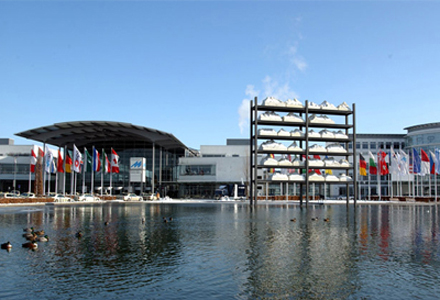
European manufacturers of construction equipment expect annual growth of 5-6 % until 2020, and 2% points in additional profit, a new key new industry survey has revealed.
According to the McKinsey & Company survey of senior executives at more than 75 OEMs, 69% of companies are optimistic about the future, with just one in ten predicting a deterioration in their business.
Specifically, manufacturers point to two primary opportunities: growth from markets outside Europe and the increasing importance of the aftermarket business (parts, service, and solutions). About six out of ten companies say that these two developments will be the most important trends for the industry. These are the two key findings of McKinsey’s Reengineering construction equipment study, which also includes interviews with more than 30 industry experts.
“The construction equipment industry is on the brink of profound transformation,” says Detlev Mohr, leader of McKinsey’s Automotive & Assembly Practice in Europe. “Manufacturers are facing change in almost every aspect of their business – increasing competition in emerging markets, tougher customer requirements, and tightening regulations. Moreover, big-data-driven solutions, electrical powertrains, and driverless machines will alter the market.”
Today, the construction equipment industry in Europe is made up of around 450 machinery and attachment manufacturers, who directly employ about 150,000 people and generate annual sales of approximately €40 billion. Italy, Germany, and France are the main hubs, where more than half of manufacturers are located. The industry consists primarily of small and medium-sized enterprises (SMEs): two-thirds of all companies generate annual sales of less than €50 million, and just 10% reach the €1 billion mark. At the same time, OEMs in Europe are highly international, with more than 40% of their sales taking place outside the region, mainly North America, the Middle East, and Asia.
Manufacturers collectively produce more than 100 different types of equipment – from compact excavators and cement mixers to tunnel-boring machines and cranes. Global production volumes of some machines, such as crawler excavators or wheeled loaders, are in the hundreds of thousands each year. In other cases – trenchers or milling machines, for instance – the number produced does not exceed two or three digits.
In the future, size alone will be no match for customer orientation. “The study also reveals that growth in new sales markets and the aftermarket business will shape the industry in the coming years,” says co-author Erik Sjödin.
Although equipment manufacturers state that they are well prepared for these changes, they rate their own performance as less successful in terms of recruiting skilled workers and expanding their business models into areas like financing and leasing.
“The primary factors determining success in this industry will shift from an operations focus to customer orientation,” said Sjödin. Until today, manufacturers have considered scale advantages and low-cost production to be most important, but in the years to come an even deeper understanding of customers’ business and a position at the technological forefront will take precedence. Examples of this increased customer focus include tailoring of machine designs and providing data driven services to increase uptime and fuel efficiency. Sjödin added: “Customers will also increasingly expect European OEMs to become active partners in optimising how the machines are used on site and how they contribute to the customers’ value creation.”
The survey by McKinsey & Company, a global management consulting firm, was conducted in conjunction with CECE, the European construction equipment manufacturers’ association. The resulting analysis is said to provide one of the most comprehensive perspectives available on the construction equipment industry.










